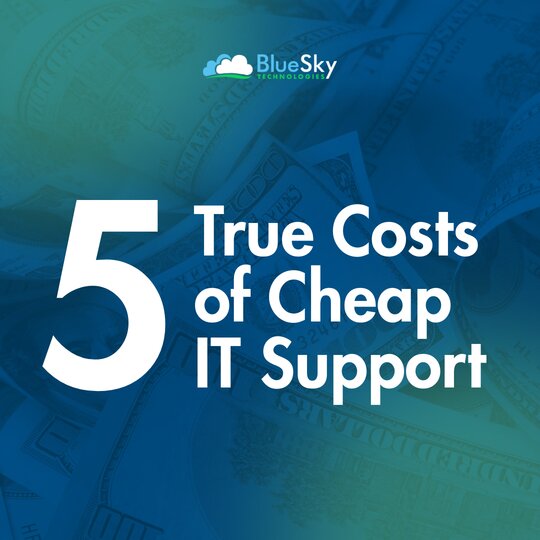 You’ve heard the saying: You get what you pay for. That’s especially true when it comes to IT.
You’ve heard the saying: You get what you pay for. That’s especially true when it comes to IT.
At first glance, a cheaper managed IT services agreement might seem like a win: lower monthly costs, basic support, and a few cybersecurity tools. But take a closer look, and you’ll often find hidden fees, limited protection, and gaps in service that can cause much bigger problems down the road.
After years of reviewing IT contracts for small businesses, we’ve seen the same red flags come up time and time again. Here are five of the most common ways “cheap” IT support cuts corners—and how those shortcuts end up costing your business more in the long run.
1. Weak Cybersecurity Protections
Basic antivirus software is not a cybersecurity strategy.
Yet many low-cost providers stop there. No multi-factor authentication, no advanced endpoint protection, no employee training, and no layered defenses.
Why does this matter? Most cyber insurance providers now require advanced cybersecurity measures before they’ll issue a policy. If those aren’t in place, your claim could be denied after an attack.
We’ve seen businesses face tens of thousands of dollars in damages because their provider never implemented the security measures their policy required. That’s not IT support. That’s IT negligence.
2. Incomplete Backups that Leave You Exposed
Many business owners assume platforms like Microsoft 365 or Google Workspace are backing up their data. They’re not.
These tools offer only basic recovery options and aren’t built for complete disaster recovery or long-term retention.
Inexperienced providers often skip backups for cloud apps, CRMs, and third-party platforms entirely. Some don’t offer immutable backups either, which are now a requirement for many cyber insurance policies.
Not sure what’s being backed up? Ask your provider directly, and make sure nothing critical is being overlooked.
3. Surprise Fees for On-Site or After-Hours Support
Here’s a common pricing tactic: offer a low monthly rate, then bill extra any time you need help outside of regular business hours or when someone needs to show up in person.
We believe in transparent, predictable pricing. But many providers carve out on-site visits, after-hours help, and even emergencies so they can tack on fees later.
The result? You’re constantly second-guessing whether you should reach out when problems arise, which only increases downtime and costs.
4. No Support for Vendors or Third-Party Devices
If an issue involves your phones, internet connection, or security cameras, some providers simply say, “That’s not our problem.”
They may even charge hourly just to talk to your other vendors, or if a device isn’t on their “approved” list, they might refuse to help at all.
We include full vendor coordination and network support for everything that touches your business technology, because problems don’t always come from one place.
5. Inexperienced Techs & No Real Oversight
Another major red flag: a one-person operation or provider that relies on entry-level techs without a proper strategy behind the support.
With budget MSPs, you might get help, but you don’t get guidance.
Here’s what you should expect from your IT partner:
- A dedicated account manager who understands your business
- Regular reviews of your cybersecurity, compliance, and backup health
- Help with budget forecasting and upgrade planning
- A trusted advisor rather than a tech support ticket system
Bottom Line: If it Looks Too Good to Be True, it Probably is.
Many small businesses don’t realize their IT provider is cutting corners until something breaks—a ransomware attack, server failure, or a major compliance fine.
By that point, it’s too late.
If you want reliable, strategic IT support that protects your business, it’s important to ask the right questions and look beyond the price tag. Understand what’s included, what’s missing, and whether your business is truly protected.
Not sure where your current support stands? Let’s take a look. We'll review your current IT solutions, identify any gaps, and give you a clear, honest view of what needs attention—without the jargon.
Use the form on this page to book a FREE consultation.


